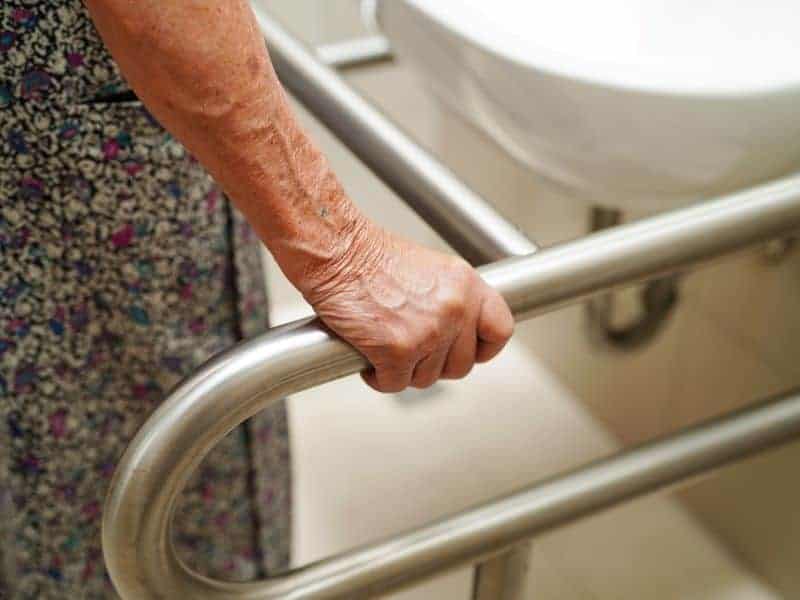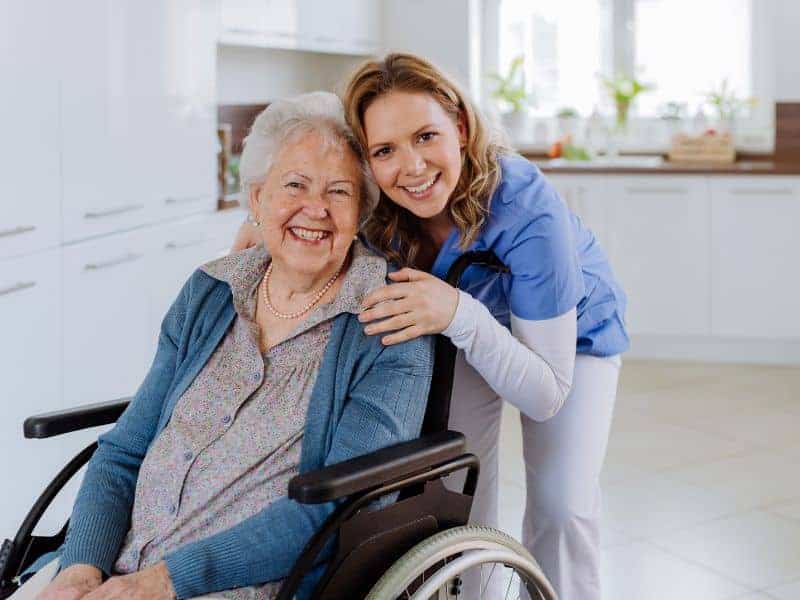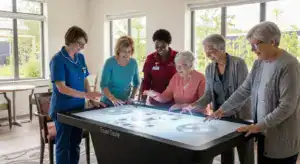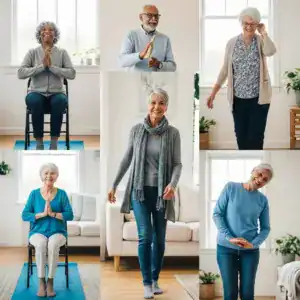
There’s something deeply comforting about aging in a place that feels like home—the familiar walls, the cherished memories, the sense of belonging.
For many older adults, the dream of staying in their home isn’t just about avoiding change; it’s about holding on to their independence and identity.
As a family member or caregiver, you want to see your loved one thrive—to feel safe, respected, and empowered as they age. However, navigating the journey of aging in place can feel overwhelming sometimes.
How do you make sure they’re safe? How do you provide the right balance of support without taking away their independence?
This guide is here to help. With thoughtful planning, practical resources, and extra care, you can give your loved one the opportuity to age with dignity and joy in the place they call home. Let’s explore the steps to make that dream a reality.
What Does Aging in Place Mean?
Aging in place means living in one’s home and community independently and safely as one grows older.
For many older adults, the idea of staying in their homes brings comfort and familiarity. It allows them to maintain their daily routines, remain close to family and friends, and avoid the stress of moving to a new environment.
However, aging in place is about much more than just staying in one location—it’s about creating an environment where older adults continue to live comfortably, safely, and with dignity.
To achieve this, families often need to make adjustments to the home, address potential health concerns, and provide appropriate levels of support.
Benefits of Aging in Place
Aging in place offers numerous advantages for older adults and their families. These benefits include:
- Emotional Well-Being
Staying in a familiar setting can reduce the stress and anxiety associated with moving to a new environment. Familiar surroundings bring comfort and stability, helping your loved one feel secure and grounded. - Preservation of Independence
Aging in place allows seniors to maintain control over their daily routines and decisions. This sense of autonomy is crucial for their self-esteem and overall well-being.

- Stronger Social Connections
By staying in their community, older adults can remain connected to neighbors, friends, and local organizations. These connections help prevent loneliness and promote mental health. - Cost-Effectiveness
Compared to moving into an assisted living facility, aging in place is often affordable. While modifications and caregiving services may involve some costs, they are often less expensive than institutional care. - Health Benefits
Being in a familiar environment can reduce the risk of confusion, especially for individuals with cognitive impairments such as dementia or Alzheimer’s. Additionally, it allows for the continuation of healthy habits and routines.
Challenges Faced by Older Adults Wishing to Age in Place
While the idea of aging in place is appealing, it’s can be challenging. For your loved one to thrive in any place they call home, it’s essential to be aware of possible challenges and how to address them.
- Home Safety Concerns: Homes that were once perfectly suited to their needs may now pose risks. Stairs, slippery floors, and poor lighting can make falls more likely.
- Health and Mobility Issues: Health problems, trouble moving around, or memory issues can make everyday tasks harder. Older adults might need help with things like getting dressed, cooking meals, or moving from room to room.
- Limited Access to Support Services: Finding reliable in-home care or community resources can be challenging depending on the location. Families often need to research local agencies, such as Area Agencies on Aging, to identify available support.
- Financial Constraints: The cost of making home improvements, hiring caregivers, or buying medical equipment can add up quickly. Without proper planning, these costs can become a burden for families.
- Isolation and Loneliness: Even with the comfort of home, aging in place can sometimes lead to social isolation, especially if your loved one has limited mobility or family members live far away.
- Caregiver Burnout: Family caregivers often play a crucial role in helping loved ones age in place, but this responsibility can be overwhelming. Caregivers may experience physical and emotional exhaustion if they don’t have enough support.
Preparing the Home for Safe Aging in Place
Creating a safe and comfortable home environment is key to helping older adults age in place successfully. As our loved ones grow older, the homes they’ve lived in for years might no longer meet their needs.
You can help by making thoughtful modifications to ensure their living space supports their independence and minimizes risks.
Identifying Potential Hazards
A good starting point is to assess the home for possible safety risks. Here are some common areas to focus on:
- Stairs: Uneven or steep stairs can lead to dangerous falls. Adding railings on both sides or installing a stairlift can make this area safer.
- Floors: Slippery surfaces or loose rugs increase the chance of tripping. Use non-slip mats, remove clutter, and secure any loose carpeting.
- Lighting: Dimly lit areas can make it hard to see and navigate. Add brighter bulbs, motion-sensor lights, or nightlights in hallways, bathrooms, and stairways.
Essential Home Modifications
To promote safety and accessibility, consider these changes:
- Bathroom Upgrades: Bathrooms can be risky for older adults. Install grab bars near the toilet and shower, use a shower chair, and replace regular tubs with walk-in models. Non-slip mats in the shower and on the floor are essential.

- Kitchen Adjustments: Make commonly used items reachable by reorganizing cabinets and drawers. Consider adding pull-out shelves and ensuring the stovetop and appliances are user-friendly.
- Ramps and Doorways: Replace stairs with ramps where possible. Widen narrow doorways to accommodate walkers or wheelchairs if needed.
Creating an Emergency Plan
Even in a well-prepared home, emergencies can happen. Have a plan in place to keep your loved one safe:
- Medical Alert Systems: Devices that allow older adults to call for help at the press of a button can be life-saving.
- Fire and Carbon Monoxide Detectors: Ensure all alarms are functioning and easy to hear. Replace batteries regularly.
- Emergency Contacts: Keep a list of emergency numbers in a visible spot, like on the fridge or near the phone.
Making the Home Comfortable
Safety is important, but so is comfort. A welcoming environment can improve their quality of life:
- Temperature Control: Ensure the home stays warm in winter and cool in summer, as older adults are more sensitive to temperature changes.
- Seating and Furniture: Choose furniture that is easy to get in and out of, with armrests and firm cushions.
- Personal Touches: Include familiar items like family photos, favorite decorations, or cherished belongings to make the space feel like home.
Preparing the home for safe aging in place takes time, but these changes can make a difference. A safe, accessible, and comfortable home empowers older adults to live more independently while giving families peace of mind.
Support Services for Thriving at Home
Remember, aging in place is about more than just staying in a familiar home; it’s about creating an environment where your loved one can truly thrive.
This often requires the right combination of support services tailored to their unique needs.
In-Home Care Services
One of the most effective ways to support older adults is through in-home care. These services bring professional caregivers into the home to assist with various needs:
- Personal Care: Help with bathing, grooming, dressing, and other activities of daily living (ADLs).
- Meal Preparation: Caregivers can prepare nutritious meals tailored to dietary restrictions or preferences.
- Light Housekeeping: Tasks like laundry, vacuuming, and organizing help keep the home clean and manageable.
- Companionship: In-home caregivers provide emotional support and companionship, reducing feelings of loneliness or isolation.

Community-Based Resources
Many older adults benefit from services available in their local community. These can include:
- Adult Day Care Centers: These centers provide social interaction, activities, and sometimes even medical care. For instance, if you’re not able to stay at home with your loved one throughout the day, you have to drop them off in an adult daycare during the day and pick them up later.
- Transportation Services: Many areas have programs that offer transportation to doctor’s appointments, grocery stores, or social events.
- Area Agencies on Aging: Local agencies can connect families with resources like meal delivery programs, legal aid, or housing assistance.
Medical and Health Services
Ensuring that older adults have access to healthcare is vital for their ability to thrive at home:
- Home Health Services: Licensed professionals, such as nurses or physical therapists, provide medical care in the home for your loved one, including wound care, physical therapy, or medication management.
- Telehealth: Virtual visits with doctors and specialists allow older adults to receive medical care without leaving home.
- Pharmacy Delivery Services: Many pharmacies now offer prescription delivery, ensuring medications are always on hand.
Social Connection Services
Isolation can be a significant challenge for older adults. Support services that encourage social interaction can greatly enhance your loved one’s mental and emotional well-being.
- Senior Centers: These facilities offer classes, group activities, and social gatherings tailored to older adults.
- Volunteering Opportunities: Many older adults find fulfillment through volunteering, which provides purpose and connection. You can encourage your loved one to volunteer at local charities
- Faith-Based Groups: Local religious organizations like churches or mosques often offer support groups, community events, and other resources.
Financial and Legal Assistance
Navigating the costs of aging in place can be overwhelming. Support services in this area include:
- Financial Planning Advisors: Professionals who help families create budgets for caregiving, home modifications, and other expenses.
- Medicare and Medicaid Assistance: Experts can guide families through eligibility requirements and enrollment processes for health insurance programs. This reduces the burden of paying out of pocket for professional and medical caregiving services.
- Legal Aid: Elder law attorneys assist with wills, advance directives, and guardianship matters.
Technology-Based Support
Modern technology plays a key role in helping older adults thrive at home:
- Smart Home Devices: Voice-activated assistants, smart thermostats, and automated lighting can make the home more accessible and safer.
- Health Monitoring Apps: Wearable devices or apps track vital signs and activity levels, allowing family members and doctors to monitor health remotely.
Promoting Physical and Mental Well-Being
As we grow older, staying strong, active, and mentally engaged can significantly impact our overall quality of life. Promoting these habits helps older adults remain self-sufficient, reduces the risk of illness, and enhances emotional resilience.
The Importance of Staying Physically Active
Physical activity plays a key role in healthy aging. It helps your loved one maintain strength, flexibility, and balance, which are crucial for preventing falls and performing daily tasks.

Here’s how physical activities support well-being:
- Maintains Muscle Strength: Regular movement helps combat muscle loss, allowing your beloved senior to continue lifting groceries, climbing stairs, and managing household chores.
- Boosts Heart Health: Cardiovascular activities, like walking or swimming, improve circulation and reduce the risk of heart disease and stroke.
- Improves Balance and Flexibility: Exercises like yoga or tai chi help prevent falls by enhancing stability and range of motion.
- Eases Chronic Pain: Physical activity can reduce discomfort from arthritis or other conditions by improving joint flexibility and blood flow.
Encourage your loved one to engage in activities they enjoy, like gardening, dancing, or walking with friends. Even light exercises, such as stretching or chair yoga, can make a big difference.
Prioritizing Mental Well-Being
Just as important as physical health is the mental and emotional health of your mom, dad, or grandparent. A sharp, and engaged mind contributes to better decision-making, improved mood, and a sense of purpose.
- Mental Stimulation: Regular brain exercises, such as puzzles, reading, or learning new skills, help keep cognitive abilities sharp.
- Stress Reduction: Activities such as mindfulness meditation, or deep breathing exercises reduce anxiety and improve focus.
- Emotional Resilience: Talking with loved ones or participating in support groups helps older adults cope with the emotional challenges that come with aging.
- Sense of Purpose: Volunteering, pursuing hobbies, or mentoring younger generations fosters a feeling of accomplishment and connection.
Introduce your loved one to digital games or apps designed for cognitive training. These tools are often enjoyable and can provide a fun way to stay mentally sharp.
Creating a Routine for Health
Building healthy habits into daily routines ensures consistency and promotes long-term well-being. Here’s what a well-rounded approach might include:
- Balanced Diet: Nutritious meals that include fruits, vegetables, whole grains, and lean protein fuel both the body and brain.
- Adequate Rest: Quality sleep allows the body to recover and supports emotional stability.
- Hydration: Drinking plenty of water is essential for energy and organ function especially as we age.
- Social Interaction: Regular communication with friends, family, or community members combats loneliness and depression.
You can create a schedule for meals, exercise, and leisure activities to ensure these habits become second nature.

Financial Planning for Aging in Place
Financial planning for aging in place is one of the most important steps in ensuring that older adults can remain in the comfort of their homes for as long as possible.
Without careful planning, the cost of medical care, home modifications, and other services can quickly add up.
However, with the right knowledge and resources, you can navigate these financial challenges and help your loved one maintain their independence while managing costs effectively.
Understanding the Costs of Aging in Place
The costs of aging in place can include:
- Home Modifications: These can include grab bars, ramps, wider doorways for wheelchairs, and better lighting. The cost of these modifications varies depending on the home’s size and the complexity of the changes.
- In-home Care Services: Professional caregivers assist with daily activities, such as personal care (bathing, dressing, grooming), meal preparation, light housekeeping, and transportation. The cost of in-home care services can be high, depending on the level of care required.
- Medical Equipment and Supplies: Items like mobility aids (walkers, wheelchairs), medical alert systems, and specialized beds or chairs can help seniors stay independent but can be expensive.
- Home Health Care: Some seniors may need skilled medical care in their homes, including visits from nurses, physical therapists, or occupational therapists.
Knowing these potential costs is the first step in effective financial planning.
How to Pay for Care When Aging in Place
There are several ways to finance the costs associated with aging in place, and different sources of funding may cover different services. Here’s an overview of the most common financial resources available:
1. Medicare
Medicare is a national health insurance program that provides coverage for individuals aged 65 and older. However, Medicare doesn’t typically cover long-term care, including in-home personal care or help with daily activities. That said, there are specific circumstances in which Medicare may help:
- Home Health Care: Medicare may cover medically necessary home health services, such as skilled nursing care, physical therapy, and occupational therapy when prescribed by a doctor and deemed necessary for the senior’s care.
- Hospice Care: Medicare covers hospice care for terminally ill individuals who have six months or less to live, which can include care provided in the home.
2. Medicaid
Medicaid, which is available to low-income individuals, provides more extensive coverage for long-term care services than Medicare.
Medicaid may cover home and community-based services (HCBS) that help seniors with daily activities like bathing, dressing, and meal preparation. This can include personal care aides, skilled nursing, and therapy.
Each state has different Medicaid rules, so it’s essential to research the specifics of your loved one’s state’s Medicaid program.
3. Long-Term Care Insurance
Long-term care insurance is designed specifically to cover the costs of long-term care, which includes services like home care, nursing home care, and assisted living. These policies can cover a wide range of services including paying for in-home caregiver services and home modifications.

However, long-term care insurance can be expensive, and it’s important to purchase it early in life to keep premiums affordable. Also, not all policies cover all services, so review the terms carefully.
4. Veterans Benefits
The U.S. Department of Veterans Affairs (VA) offers several programs that can help veterans and their spouses pay for care.
For example, the Aid and Attendance benefit provides additional financial assistance for veterans who need help with daily activities, including personal care and home modifications.
The eligibility requirements and benefits depend on various factors, including the veteran’s military service history and income level.
5. Out of Pocket
Families may need to rely on personal savings to help fund care if other financial resources are insufficient. Families need to have open and honest conversations about finances early on to ensure everyone understands their role in providing support.
In some cases, children or other family members can contribute financially to help fund home modifications or in-home care.
6. Local and Community Resources
Many local organizations, Area Agencies on Aging, and non-profit groups offer financial assistance or grants to seniors in need. These programs may help cover the cost of home care, adult day care, transportation, and home modifications.
It’s important to research the local area to see what resources are available and to inquire about eligibility for specific programs.
How to Get Started with Financial Planning for Aging in Place
To get started with planning for aging in place, families should:
- Assess Your Senior’s Needs: Take a close look at the level of care needed and determine the costs of medical services, home modifications, caregiving, and other expenses.
- Evaluate Available Resources: Research and evaluate options like Medicare, Medicaid, long-term care insurance, and veterans benefits to see which programs offer the best coverage.
- Set a Realistic Budget: Understand how much of your loved one’s income or savings can go toward aging in place, and create a budget that accounts for immediate and long-term expenses.
- Consult with a Financial Advisor: Consider meeting with a financial advisor specializing in elder care to ensure that your family is taking the best approach to financial planning.
- Explore Funding Options: Investigate financial products like reverse mortgages, or tap into community-based financial assistance to help cover the costs.
Monitoring and Adapting Over Time
Aging in place is a dynamic process, not a one-time decision. Over time, your loved one’s needs will evolve, and what worked initially may no longer be sufficient. Regularly assessing both physical and emotional well-being, and the home’s safety, is essential to ensure that the environment continues to meet your loved one’s changing needs.
Sometimes, when in-home care or modifications no longer meet the individual’s requirements, transitioning to a different setting, such as an assisted living facility or a group home, can provide the right balance of independence and support.
These environments often mirror the comforts of home but with added professional care, ensuring seniors maintain a high quality of life while addressing growing needs.
Takeaway

Aging in place allows seniors to stay in their homes, keeping their independence while enjoying the comfort they know. However, as time goes on, needs can change, and having the right support is key to staying safe and healthy.
At Amy’s Eden Senior Care, we understand how important it is to provide care that’s just right for each person, whether at home or in one of our assisted living homes that feel just like home.
If your loved one is doing well at home, our professional in-home care services can help them stay safe and comfortable.
If staying at home is no longer an option, our assisted living homes provide a cozy environment with only two residents per home, ensuring they get the care and attention they need.
Contact us to learn how we can help your loved one live their best life in their golden years, with all the care and support they deserve.




